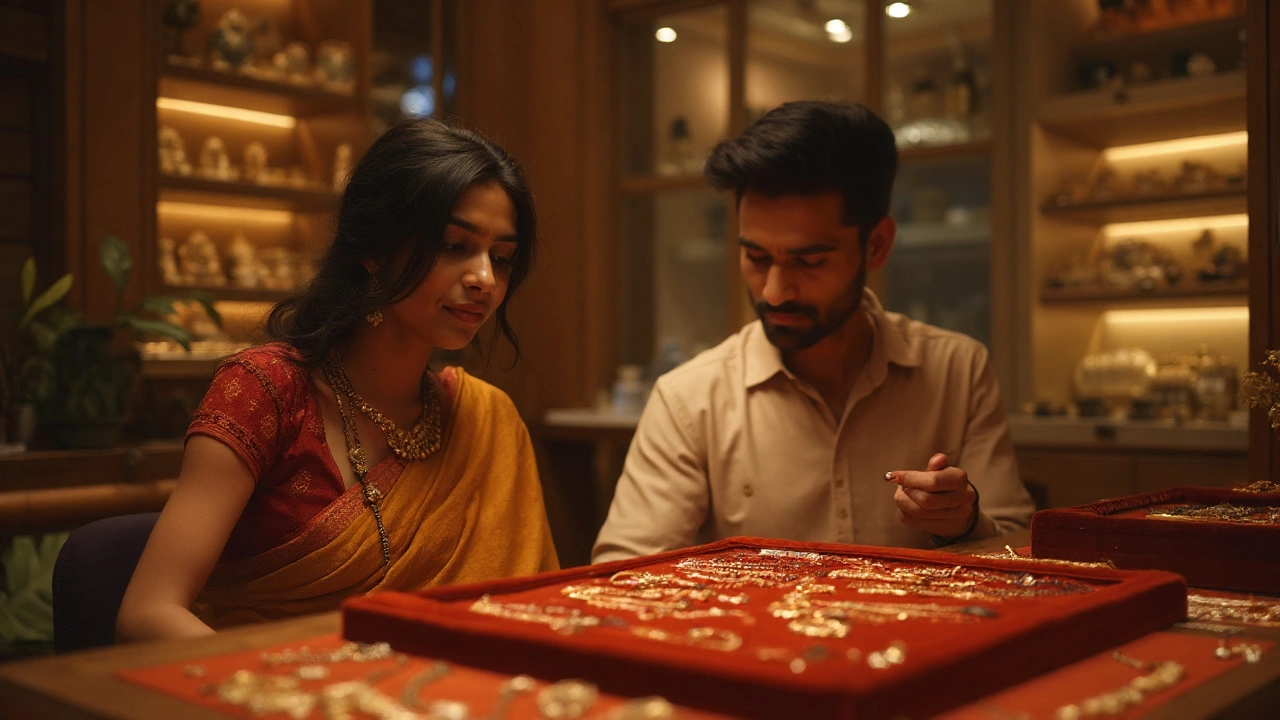
Cut through the guesswork: what makes an ideal mangalsutra today? Get the meaning, design choices, gold purity tips, durability, and a buyer’s checklist.
When talking about Ideal Mangalsutra, the classic Indian wedding necklace that represents marital commitment and cultural heritage. Also known as Mangalsutra, it blends spirituality with fashion, acting as a daily reminder of a couple's bond. Ideal Mangalsutra isn’t just a piece of metal; it’s a story people wear. That story starts with Mangalsutra gifting tradition, the custom where family members present the necklace during the wedding ceremony, often with specific rituals about who buys and who ties it. The tradition influences who chooses the design, material, and price range. Next, consider Mangalsutra symbolism, the meanings attached to the necklace—such as protection, longevity, and a visual cue of marital status. Symbolism shapes the preferred motifs, like the sacred kalash or the intricate paisley. Finally, the Mangalsutra buying guide, practical advice on selecting the right weight, purity, and design that fits personal taste and budget helps shoppers navigate a market overflowing with options. Together, these entities form a web: the gifting tradition dictates the symbolism, which in turn drives the buying guide, all circling back to the ideal mangalsutra itself.
Choosing the ideal mangalsutra starts with knowing the material. Many prefer 22K gold for its rich hue and durability, while 18K offers a lighter feel at a lower cost. Purity matters because it affects resale value and how the piece ages—higher purity means less alloy, but also a softer feel. Design wise, regional styles vary: South Indian versions often feature a thicker chain with multiple black beads, whereas North Indian designs lean toward a thin gold strand dotted with a single pendant. Understanding these regional differences helps you match the necklace to your cultural background or personal aesthetic. Fit is another hidden factor. A mangalsutra should sit comfortably around the neck without pulling, especially if you plan to wear it daily. Measuring your neck size and checking the clasp type—lobster, toggle, or hook—prevents irritation later. Also, think about the pendant’s weight; a heavy piece can feel cumbersome, while a light charm may not hold the same symbolic weight for some families. Finally, think about future maintenance: gold rarely tarnishes, but intricate designs may need occasional cleaning to keep the shine and prevent snagging.
Modern couples are remixing tradition, adding diamond accents, colored gemstones, or even mixing metals like rose gold with silver. These tweaks keep the mangalsutra fresh without breaking the cultural link. If you’re a divorced woman or someone redefining the symbol, many designers now offer “reimagined” mangalsutras that honor the original meaning while fitting new life chapters. The key is to stay true to what the necklace means for you, whether that’s protection, style, or a blend of both. Below you’ll find a curated set of articles that dig deeper into gifting customs, regional designs, price comparisons, and step‑by‑step buying tips—so you can walk away with a clear plan before you shop.

Cut through the guesswork: what makes an ideal mangalsutra today? Get the meaning, design choices, gold purity tips, durability, and a buyer’s checklist.